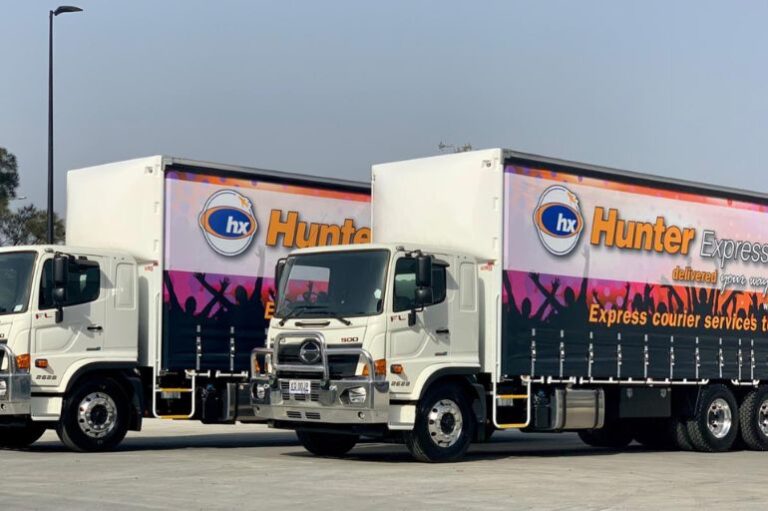In 2020, the national parcel delivery group Hunter Express started working with transport management software provider TransVirtual to upgrade and integrate its freight systems, fortuitously timed to help satisfy and capitalise on the COVID-inspired online shopping boom.
Hunter Express management couldn’t be happier. The digital transformation led to a double-digit improvement in profit margins per consignment, fleet and route optimisation, access to big brand online retailers, ability to see and target more profitable freight segments and reduced need for customer service and accounting staff.
“With the exception of the warehousing function within TransVirtual, we use every single element of the platform: all of the value propositions. We’re not just using it for a sign-on glass proof of delivery or as an invoicing system. We use it for our customer service, we use it for absolutely everything,” said Hunter Express CEO Mr Richard Tesoriero
Hunter Express, founded in Melbourne 34 years ago, today delivers approximately 1.3 million consignments a year. It specialises in parcels, particularly SHR (specialised handling requirements) parcels, which are generally oversized, though they are still able to be physically lifted. They might include things like flat pack furniture, mattresses and rolled up rugs. The freight group has seven depots — Melbourne, Sydney, Brisbane, Adelaide, Perth, Canberra and Newcastle — and a fleet of owned and sub-contractor operated vehicles comprising vans to B-doubles. It has a relationship with 33 agents, giving it access to almost every corner of the country.
Mr Tesoriero said when Hunter Express adopted the TransVirtual TMS the idea was to replace a hotchpotch of different software and manual systems. He said about half of the agents they worked with already had TransVirtual. Today almost 90 percent of their agents have integrated the TransVirtual software and Mr Tesoriero said they are working with the rest to get all of their agents using the system.
“We’re busily working with a number of the others trying to get them onto TransVirtual, which is a benefit both to them and to us,” said Mr Tesoriero. “We obviously gained some significant improvements and efficiencies through the use of TransVirtual, therefore the more agents that we have operating that system, the better integration we have in terms of data sharing and visibility for both our customers and the receivers.”
Mr Tesoriero said the visibility of the margin reporting they are able to capture from the TransVirtual system has allowed them to understand better the company’s profit margins and refine them to provide a more competitive, yet still profitable, price offering to the market.
In addition, he said, migrating to the TransVirtual system has enabled his delivery fleet to work with the biggest and most well-known online retail brands operating in Australia, who have high expectations for the IT capabilities of transport providers they partner with.
“This system allowed us to go to market with a cutting-edge solution,” said Mr Tesoriero.
Before adopting TransVirtual’s system, Hunter Express used a number of manual processes, including to the application of charges and invoicing. “We didn’t have a full blown transport management system. We didn’t even have integration with a lot of these agents,” said Mr Tesoriero.
“Now we’ve completely automated our charging and invoicing function and one of the benefits of that was in the first month of going live seeing a double digit percent increase in average revenue per consignment.
“Our freight profile didn’t change that much in a month. It was just the automation that prevented revenue leakage within the business, so a massive benefit for us from a profit perspective,” said Mr Tesoriero, adding, “That automation also allowed us to reduce our headcount by eight staff.” Charging and invoicing staff were cut to one member from three, and customer service staff were reduced to 6 from 12.
The automated communication function of the TransVirtual system communicates the whereabouts of a parcel during its lifecycle in the network from sender to receiver with messages such as “your consignment has been collected”, “your consignment has been delivered” etcetera. This automated communication drove the reduction in customer service queries because the automation of that communication allowed customers to be fed the information from the system seamlessly without human intervention.
Today Hunter Express is almost 40 percent bigger than it was just three years ago and that growth said Mr Tesoriero could not have been possible without the advantages brought into the company with TransVirtual’s help to digitally transform the freight, fleet operations and management.
“I wouldn’t be recommending this to key delivery partners if it wasn’t a value add for our business.”






